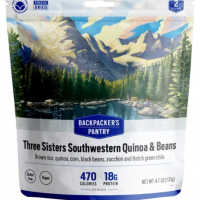Six Moon Designs Serenity Ultralight NetTent
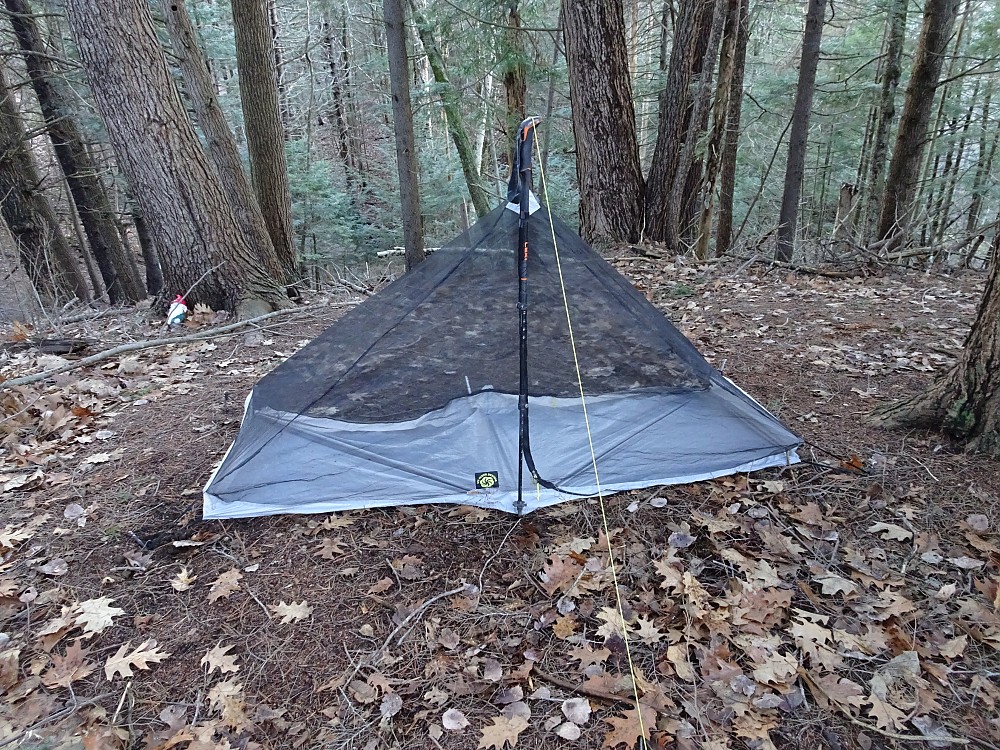
The Serenity UL NetTent from Six Moon Designs works great as part of a primary shelter system, but is light enough to carry as a secondary option. So many ways to set up in shelters, under tarps, or open to the sky makes it great for distance hiking.
Pros
- Packs small and light 11oz/312g
- Durable materials
- Good entry/exit door
- Versatile hang and stake features
Cons
- Drying time if wet

Since I was going to be testing the Six Moon Designs Gatewood Cape I figured I would try out their Serenity UL NetTent along with it. The two are designed to work together well and they do, but I used the tent on its own much more. SMD offers them bundled together or individually. Six stakes and a support pole are needed for best standalone erection and are not included. Let's take a good look at the tent and its features, then I will get into how I used it with tarps and in shelters.
Materials & Construction:
Sometimes simple recipes are the best. The Serenity Ultralight NetTent is mostly a bathtub floor with net walls and a couple of zippers, but these are the basics of what you need in a net shelter.
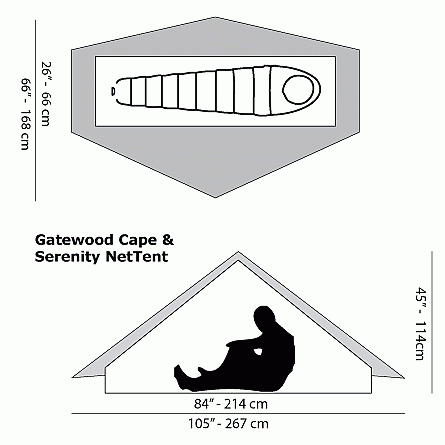
The rectangular floor measures roughly 26" x 84" if pitched taut, but left looser the side walls relax and make it feel roomier. The added few inches of wall at the head and foot create extra usable space.
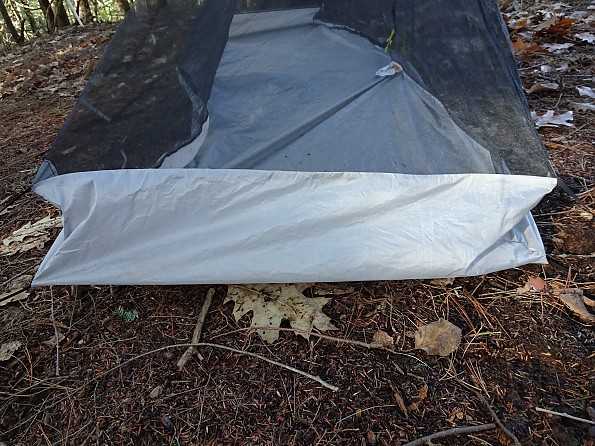
The bathtub floor is made of 30D silicone coated nylon. It rises about 3.5" on the long sides and up to about 8" for the head and foot panels. This vertical wall creates more usable room at either end.
The 20D "No-See-Um" netting is fine enough to keep the tiny invisible mites at bay. The net material is well sewn to the floor, zippers and itself with even, tight stitching all around.
Features:
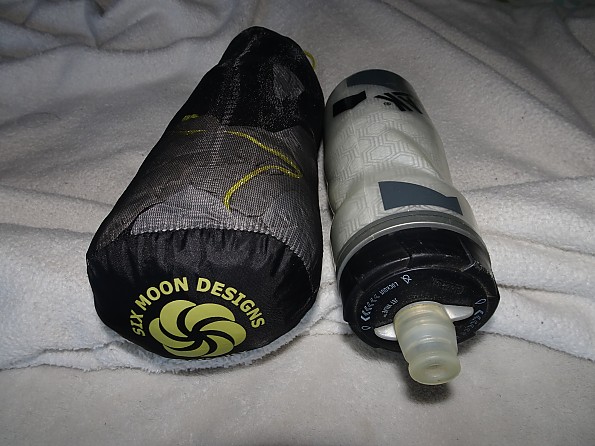
Packs small, a bit larger than a 21oz bike bottle. The rounded shape was easy to cram into the pack.
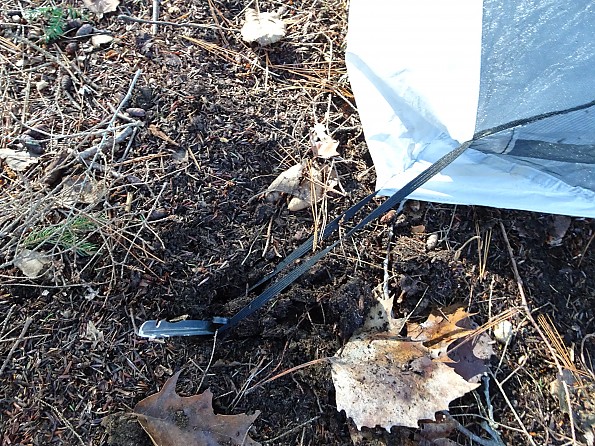
Elastic loop with clip at the stake out points. The clip can attach easily to the guy out lines of the Gatewood Cape, while the elastic loop works well with a stake.
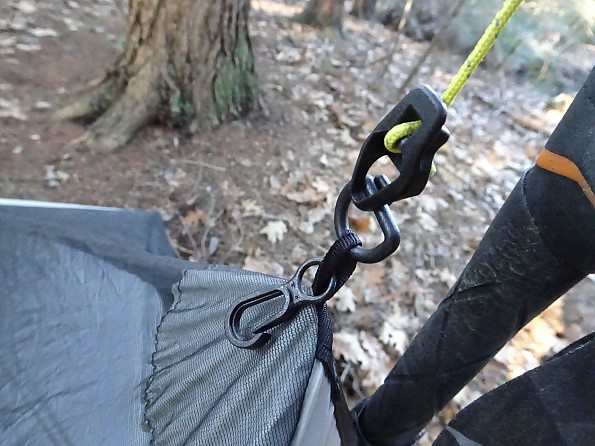
Between the clip and the line lock equipped guy line attached via D-ring there are a lot of options available when it comes to keeping the roof over your head. The line can be used with a hiking pole or stick and then staked out or can be tied to an overhead branch or shelter roof.
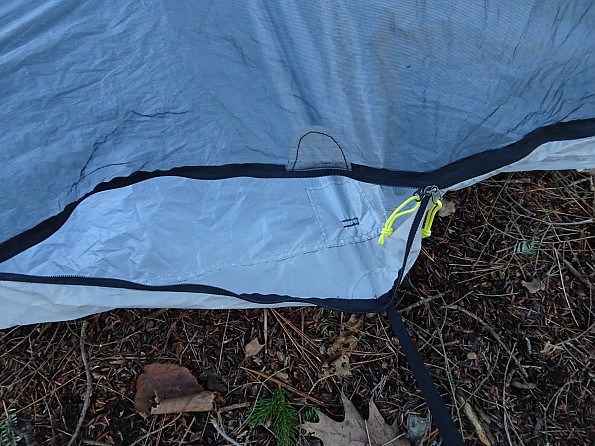
This back side zipper gives you access to additional protected storage space. Gear, shoes, etc can be stashed out of the way of the front door.
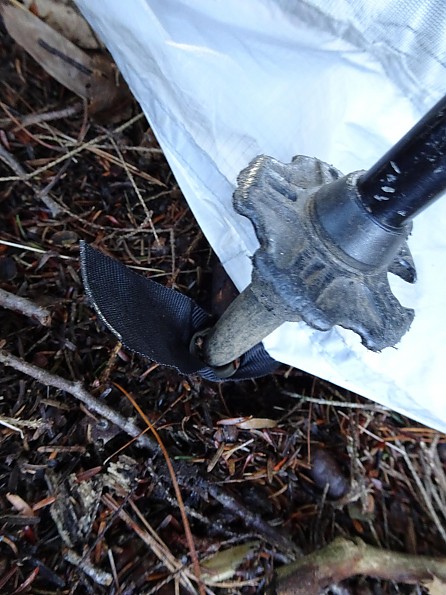
This strap with grommet located at the center of the door panel can be used with the point of the pole, but also worked with the pole inverted and the head resting on the strap. Either way it helped support the zippered door panel.

This small velcro loop can be used to further attach the door panel to the supporting pole. All of these attachment points helped keep the wall in place even with the door unzipped.
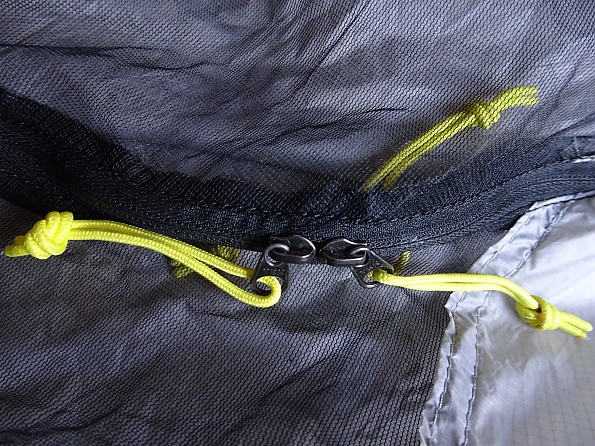
Speaking of zips, we should point out the YKK zippers, double pull on the front door, single on the back. Again, you'll notice the stitching is worth noticing heh. SMD has a reputation for solid construction because of that attention to detail.
Setup:
Full setup can be done in less than a minute if you stake out the four corners, then run the guy line over your pole and stake or tie it off. Setting it up under the already erected Gatewood Cape is even faster as you just need to clip the roof peak and the elastic corner loops. If you are lazy and in the right spot you really don't need to stake out the corners if you can hang the roof from something overhead, cutting setup time down to about ten seconds heh. With sleep pad and gear tossed inside it had enough structure to keep the bugs off.
Testing Conditions:
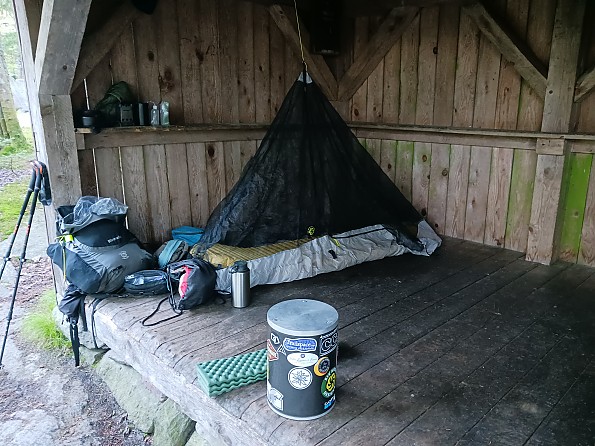
While I have carried the Serenity UL NetTent on a lot of trips this year, it really saw most of its testing on the Long Trail. Being June in Northern Vermont I was alone as far as humans, but not bugs. Black flies and mosquitoes were in full bloom so a great time to test out a net shelter.
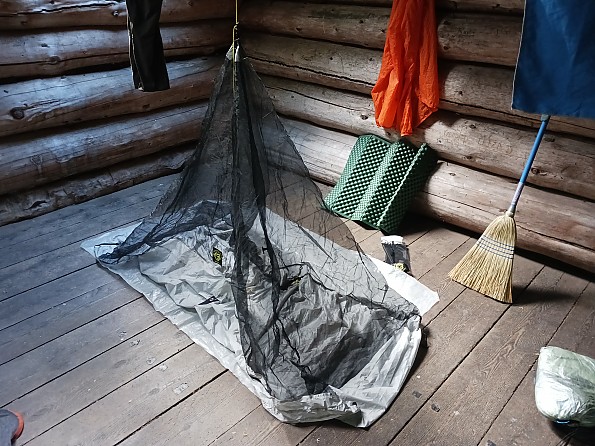
Heading southbound in June meant I had the shelters to myself for the first couple of weeks.

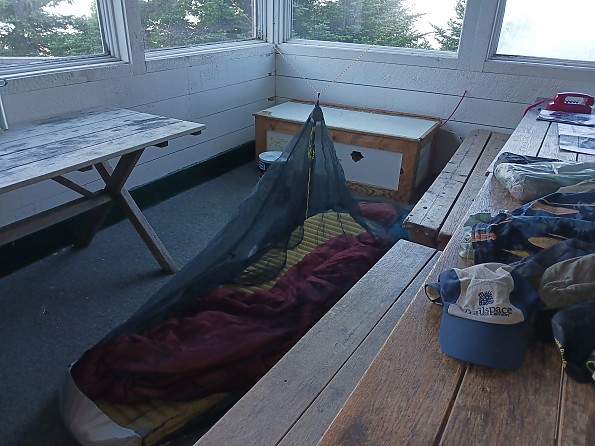
There were a lot of opportunities to figure out new ways to hang the NetTent up depending on where I found myself each night.
Conclusions:
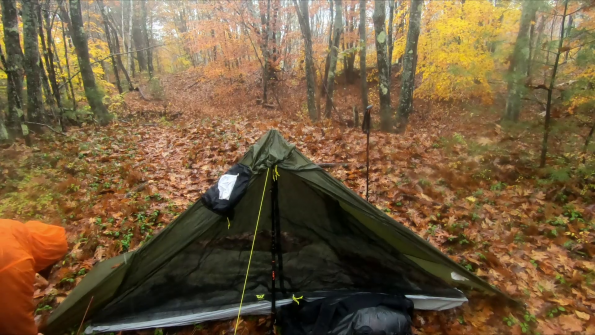
As mentioned, testing the Six Moon Designs Serenity UL NetTent was sort of an afterthought to testing the Gatewood Cape. I brought the NetTent along on the Long Trail hike as a secondary, backup sleep system. I never expected to end up using it so much, but I ended up spending the majority of the trip sleeping in it. It was just so easy to hang it up from a nail or rafter in the shelters.

The simple design really lends itself to flexibility. I really liked having the options it gave me on the LT. Combined with my hammock tarp and a couple of trees I could tighten things up to ride out weather or use a more open pitch to enjoy the breeze.
For those trying to keep things minimal pairing it with the Gatewood Cape or the SMD Deshutes Tarp makes for a small, light shelter weighing about 1.5 pounds without stakes and pole.

For my purposes I think the Serenity UL NetTent will continue to be used along with my hammock on long distance hikes. It packs so light and small for the use I got from it that it makes sense. On shorter trips I might consider leaving the hammock behind for a night or two, but I really like having options when it is time to make camp. When I am on a distance hike I want to do as little as possible other than eat and rest when I stop. As much as I love sleeping in my hammock it was just too easy most nights to hang this thing up and crawl inside.
The product itself is definitely top notch. The durable materials are about as light as I think you can go before you start to increase the damage risks. About my only complaint is that if you get the thing wet it can be hard to dry. The netting and the floor both seemed to stick to themselves making it hard to spread it out access air flow. I beat it up on trail for a month and literally didn't scratch it heh. There was plenty of rolling around on old wooden platforms and daily pack cramming, but it held up to the abuse.
I think the Serenity UL NetTent is worth consideration for those looking at putting together a UL shelter system. As someone who appreciates comfort and especially options, I find it definitely worth considering as a secondary option to carry along with my hammock.
Background
I have previous experience using floorless nets but this was my first time using one with a floor. I have used many of my tents without a fly though which is about the same.
Source: received for testing via the Trailspace Review Corps
(sample for testing and review provided by Six Moon Designs)
Your Review
Where to Buy
You May Like
Specs
| Price |
MSRP: $150.00 Current Retail: $150.00 Historic Range: $135.00-$150.00 |
| Weight |
11 oz / 312 g |



